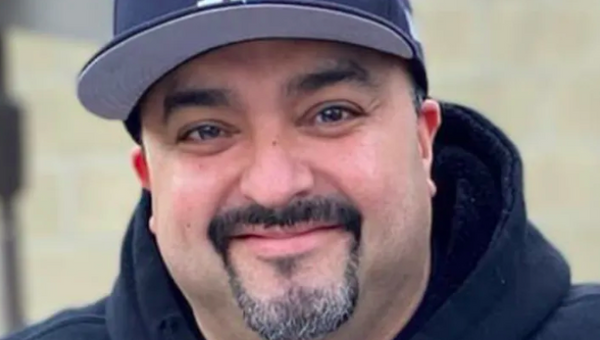
Florida Governor Ron DeSantis caused an uproar in the US in early September after sending two planes full of migrants and asylum seekers on planes to the upscale town of Martha’s Vineyard, promising jobs and housing for them on arrival. The move followed several months of efforts by other Republican governors to send thousands of migrants from border zones to Democratic cities. According to our Observers, the initiatives create a political spectacle using “human life as a political point”.
On Monday, September 19, nine buses full of migrants and asylum seekers arrived in New York City, a record number of new arrivals in one day. And they all came from border zones in Texas.
The first bus of migrants had arrived in Washington, DC in April 2022 as part of Texas Governor Greg Abbott's plan to share the “burden” of migrant border crossings with the rest of the country – in particular, Democratic cities. The plan came after the Biden administration cancelled Title 42, a health order during the pandemic that allowed border agents to deny entry even to those seeking asylum.
Since then, countless other buses have made the more than 2,700 km journey from Texas to Washington, DC, or even further to New York City and Chicago. Over 11,000 migrants have been sent from Texas as of September 16. Arizona officials have started similar initiatives, bussing nearly 2,000 people to the capital.
The buses are made up of asylum seekers, many of them from Venezuela, who are seeing political and economic protection. While some of them may have entered the country illegally, they have been registered with border agents and begun the legal process for asylum.
Once they’re registered, migrants can arrange transportation or lodging – or they can board a bus provided by state officials. The bus trips from Arizona and Texas are supposed to be voluntary – contrasting with DeSantis’ initiative, in which migrants were lured onto planes with misleading promises of work, housing and legal aid.
But those welcoming the migrants in northern cities say that this scheme has taken place without proper organisation, leaving service providers and public officials stretched thin and with insufficient resources to welcome thousands of migrants and asylum seekers.
‘People were cheering and saying, “Welcome to New York”
Camille Mackler is the executive director of Immigrant ARC, a network of associations providing legal support to migrants and asylum seekers. She was there when one of the first groups of migrants arrived in New York City on August 10.
It was chaotic. The buses came in and they got swamped. Police were trying to keep some semblance of order and help people get into the terminal. There was a tonne of media there, just rushing them. There were protesters, volunteers. People were cheering and saying, ‘Welcome to New York’.
‘They didn’t know where else to go so they hopped on the bus to New York’
As for the people getting off the buses, it was hard to tell the emotions just from the look on people’s faces. But I don’t know that they were entirely aware of being a news story at that point. There were a lot of single men. Those I spoke to were the ones who really just had nowhere to go, and didn’t know where else to go so they hopped on the bus to New York. There were others, young women and families. It was so frantic.
There were volunteers with food and clothing that people looked through because they had nothing. They literally just had the clothes on their back and the papers in their hands. But a lot of them really didn’t know what to do next.
New York City officials, as well as volunteers and aid organisations, have mobilised to meet buses as they arrive, proving food, water and basic supplies. The majority of those who have arrived – at least 8,500 – are living in shelters in the city. The city has also built temporary structures like tents to handle the rapid influx. Shelters welcomed more than 2,200 people within just one week in September.
In addition to food and shelter, aid organizations have been trying to provide legal assistance to migrants navigating the asylum-seeking process.
It was important for us to be there because we knew that people would have questions about where to go next. We knew that people came here to ask for asylum, so they wanted to know how to do that and how to fill out their legal paperwork. If you don’t show up to immigration hearings, the consequences are devastating. So we just wanted to give folks an orientation and understand their needs.
The reality is that these people want to file their applications, ask for immigration benefits and ask for asylum and protection. At a minimum, they should be informed of how to do that and have a fair chance to present their case.
New York City Mayor Eric Adams has promised to continue providing shelter for the migrants who arrive but has called for coordination with Texas Governor Abbott in order to better anticipate the city’s needs.
‘Migrants themselves are being used as a tool by governors to highlight what they say is insufficient federal attention to border issues’
Aaron Reichlin-Melnick is the policy director at the American Immigration Council, a nonprofit research and advocacy organisation focused on immigration.
At heart, this is a publicity stunt in an election year in which migrants themselves are being used as a tool by governors to highlight what they say is insufficient federal attention to border issues. The governors of Texas, Arizona and now Florida [Editor’s note: all Republican officials] are spending enormous amounts of money to charter buses – and in the case of Florida, a plane – to take migrants from the border to primarily Democratic cities. These governors are deliberately refusing to provide any notice to the cities in the US to which people are being sent.
It's worth noting that for many migrants, these buses are a positive. Normally, it’s really the migrants’ own responsibility to arrange transportation from the border to their ultimate destination. For many migrants, the fact that Texas and Arizona are offering free bus trips to the places they want to go is something that they very deeply appreciate. New York City is a pretty good place to be if you are an asylum seeker – there is a wealth of resources, a network, nonprofit organizations that have come together. But Border Patrol agents have been putting random addresses on their paperwork, like homeless shelters. And they may arrive at that location only to find out that there are no resources waiting for them.
While the buses are intended to be completely voluntary, some migrants have said that they didn’t actually want to go to New York. Others say they were told by federal authorities that they must come to New York to complete their immigration procedures.
Plus, according to US law, asylum seekers are not authorised to work for at least the first five months after submitting their case. This leaves them dependent on aid organisations, already overextended by the pandemic.
Reichlin-Melnick says there are valid concerns about the US federal government’s treatment of the country’s borders.
Once a migrant leaves the custody [of United States border control officials], that person is not really the federal government’s concern – they, by and large, don’t care what happens next. There is a legitimate concern here that the federal government hasn't taken a leading role in working with both the border and receiving communities inside the United States to better manage this flow of people from the border.
Still, Mackler said that properly welcoming immigrants is possible, with the right support and coordination.
There is a way to do this and be welcoming – not to talk about immigrants as an attack on resources, but to actually greet them and meet them as human beings and people who have come here for the same opportunities as everyone else before them. If there are the right investments from our city, state and federal government, we can manage this in a way that’s not completely inhumane. And that doesn’t use human life as a political point.







